8 Traits of a Successful Sales Person
Selling can be difficult but developing certain traits can help you improve your sales process and your sales style.
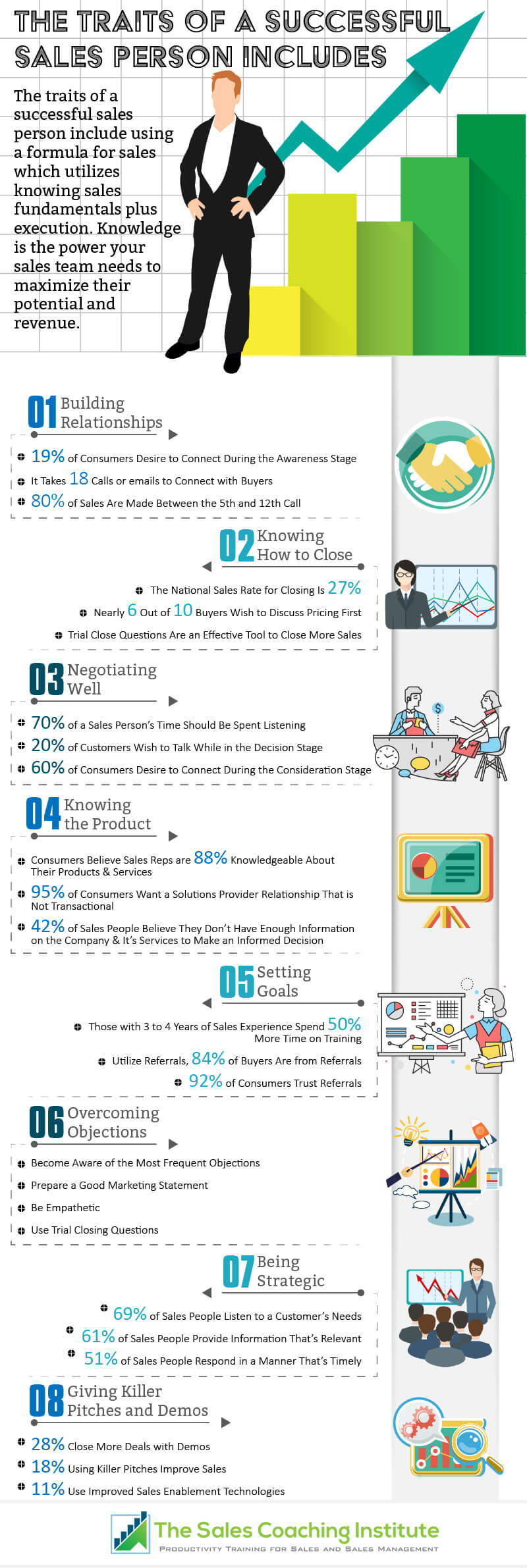

Technology has evolved so significantly in the last 25 years that most people can’t keep up. Keeping up is exactly what you need to ensure you are doing. Companies everywhere focus on digital transformation because it impacts how they make sales. Your sales team must understand the digital process before they can sell products and services. Otherwise, you are bound to lose customers because they want things done differently, more now than ever before. The goal of digital transformation is to connect you with your customers and use a variety of technologies to do so. The three-step process is simple and effective, but you have to ensure that you help your sales team fully understand it and how it can work for them.
The first step to your sales team becoming digital is giving them the tools they require to be part of the digital age. Almost everyone has cell phones, tablets, and other electronic devices, but you need to ensure that they have one just for company purposes. You may not give every salesperson the ability to scope leads online, but you should have a team (or a few people) devoted to it. They can utilize social media, cloud-based CRM and mobile technology to present your company digitally. Having a great website that is not mobile-friendly is a big mistake today with more than half of the internet being accessed via mobile devices. Keeping up with simple, but extremely important technology updates like this can give your sales team the advantage when push comes to shove.

There are specific tools required so that salespeople can transform digitally, but they also need the right training. While they probably know how to operate a cell phone and use it on social media, they may not understand the nuances of selling online. You may also have to invest in a digital sales course to help teach them what social media channels they can use and how to use them to better reach their customers and prospects. Or you might need to teach them the new CRM system and help them understand the changes they soon face. Helping your sales force keep up with technology through training is key to ensuring your sales force is not falling behind.
The digital transformation of your sales team can’t be complete without automation. Making appointments, creating invoices, and sending emails take up time that your employees don’t have. If you want them to be successful and more productive, automate some of these mundane tasks so that your sales force can focus on what they are good at, getting more leads and sales! By automating some of their workloads through the use of simple automation tools you are improving efficiency.
 Staying abreast of these three steps year after year is no easy task. You may need to hire a few people along the way in order to really take advantage of all of the new technologies that emerge in the coming years. If you are able to stay ahead of the technology curve, your company will outsell your competition. The use of technology is a continuous growing culture that should be utilized in your sales company. Word of mouth will spread that your company is doing cutting-edge work and the investment will be a small price to pay compared to your returns. Purchasing from a company that is technically savvy is much easier and often more exciting than purchasing from a company that is falling behind. Don’t be the company that is falling behind!
Staying abreast of these three steps year after year is no easy task. You may need to hire a few people along the way in order to really take advantage of all of the new technologies that emerge in the coming years. If you are able to stay ahead of the technology curve, your company will outsell your competition. The use of technology is a continuous growing culture that should be utilized in your sales company. Word of mouth will spread that your company is doing cutting-edge work and the investment will be a small price to pay compared to your returns. Purchasing from a company that is technically savvy is much easier and often more exciting than purchasing from a company that is falling behind. Don’t be the company that is falling behind!
Related Article: 5 Innovative Strategies to Drive More Revenue
In this article, we discuss the one percent principle in selling. If sales is a game of numbers, then at times, the numbers can be misleading. For most people, the thought of one percent doesn’t seem like a lot, but when you think about how that one percent difference affects the grand scheme of things, the difference is staggering.
Just 1 percent could lead to 12 babies being given to the wrong parents daily, two unsafe planes landing at international airports hourly, and worst of all 5.5 million cases of beer being produced flat. If you think about the one percent under these terms, that tiny difference in percentages can have huge consequences.
In terms of time, the percentage equals about 14 minutes and 40 seconds of your day and a lot can happen in that short span of time. Adding that much time to your sales day will equal about one and a quarter hours to the week and about 75 hours each year. We often underestimate or overestimate our time and make poor use of the golden hours when customers have the time to speak with you.
Inaccurately gauging the use of our time is the root cause of missing deadlines and making mistakes. Time misuse leads to rushing to finish a proposal or project the day before it is due. Missing deadlines for accounts and making mistakes causes lost opportunities. If you spend adequate time developing new business activities and growing your sales pipeline, you can double your sales numbers in less than a year.
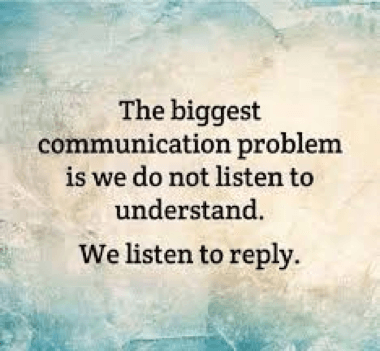 The best sales reps keep up with the percentages and how they apply to their selling success. Top sales representatives understand that selling is about equal to 60 percent listening and 40 percent talking. Why? While it is important to inform your customers about your product’s features, benefits, and solutions to their problems. You won’t be able to accurately express these concepts without understanding how you can help the customer. If you’re more concerned with talking and less concerned with listening, then you’re operating backwards. Your objective is first to find out if what you have to offer is right for your customer. If you and your prospect are both on the same page, then chances are, your customer will find value in your product and a sale will be made.
The best sales reps keep up with the percentages and how they apply to their selling success. Top sales representatives understand that selling is about equal to 60 percent listening and 40 percent talking. Why? While it is important to inform your customers about your product’s features, benefits, and solutions to their problems. You won’t be able to accurately express these concepts without understanding how you can help the customer. If you’re more concerned with talking and less concerned with listening, then you’re operating backwards. Your objective is first to find out if what you have to offer is right for your customer. If you and your prospect are both on the same page, then chances are, your customer will find value in your product and a sale will be made.
Related Article: Effective Communication Skills for Sales Professionals
When it comes to talking, it’s important to condense your sales messages down to the most important details. You will save valuable time for you and your customer. The 1% principle essentially means focusing on the customer and not on yourself. If you’re not talking about the most important things, then chances are your rambling about unimportant details. Your customer will see through this and most likely lose interest. How can the 1% principle help you when dealing with customers?

Develop the ability to frame conversations from “look at how great my product is” to “how can we help each other?” When consulting with customers, try and look at it from their perspective. Understand their needs and objectives. Putting more emphasis on listening, rather than talking, allows you to better communicate with your customers. Better customer communication helps the customer by answering their questions and providing real solutions to their problems.
Your ability to successfully utilize the 1% principle during the sales process inherently rests on how well you build a meaningful, trustworthy relationship with your customers. How do you do this? By focusing on how to solve their problem and not so much the details of your product. That comes later when you’ve listened enough to your customer and identified their needs, concerns, and questions.
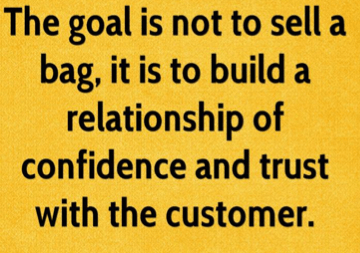

Small steps can bring on big improvements. When it comes to improving sales skills and training, it can be difficult to refine your sales skills if you spread your focus on trying to get better all in one sitting. However, in order to eat an elephant, you must take one bite at a time. The 1% principle can be a powerful tool for making continuous improvements during your sales training. Sales representatives should put all their focus and efforts into making small improvements, continuously training and learning one inch at a time. The one percent principle in selling provides a practical way of taking on tasks that seem too big to handle all at once.
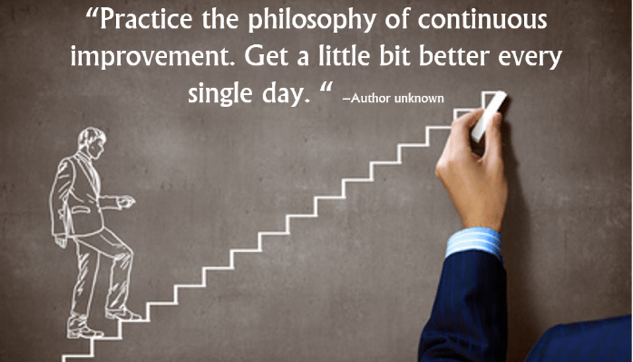
Sales is a game of inches. When you add up those inches and start to focus on making small, realistic adjustments, you’ll be more focused on taking care of the essential aspects of a task or situation. Whether you’re trying to qualify a prospect, trimming down the most important details of a proposal, or looking to improve your sales skills, utilizing the 1% principle in selling can help you to focus on isolating the most important details and making small, 1% improvements toward your goals.
Do you like what you just read? Visit our resource center and download any or all of our 17 Executive Sales White Papers to help improve your sales skills training and build a successful sales career.
“Put. That. Coffee. Down! Coffee’s for closers.” Let’s take a look at the sales lessons from Glengarry Glen Ross that you can apply to your own sales career.
Do you remember Alec Baldwin’s iconic scene from Glengarry Glenn Ross? Baldwin’s vicious and searing monologue as the fiercely intense salesmen is without a doubt, one of the most infamous scenes in movie history; and with good reason. We’ve all probably experienced a coach or manager like Alec Baldwin’s character Blake. Some would call it brash and a bit aggressive, but to call it that would take away from the dire and motivating message it was meant to deliver; If you want to be great in anything, you have to be focused and hungry.
Some of the most memorable and meaningful moments in our lives come from the situations we overcome that would either make or break us. Have you ever been in a situation where your very livelihood hung in the balance and you only had a short time to save it? Well, this was certainly the case for the salesmen of Glengarry Glen Ross. There are many important sales lessons from Glengarry Glen Ross for business-minded individuals who want to make it to the top. Whether it’s learning how to stay disciplined and motivated, or learning how to control a situation, the film’s sales lessons are worth reviewing. So put that coffee down and take notes!
A major sales lesson in Glengarry Glenn Ross is knowing how to be there for your prospects. It pays to understand their major problems, their doubts, and any questions they might have. Successful sales representatives have a way of guiding and helping their prospects to the finish line. Try and get into the minds of your prospects. You will land and close more leads.
In the movie, Ricky Roma (played by Al Pacino) says, “Never open your mouth until you know what the shot is”. It’s important to understand the weight of our decisions and the impact an informed decision has on being a stellar sales representative. Knowing the shot means understanding the context for any deal you close. Getting a good read on your prospects is one of the most important aspects of closing sales.
Related Reading: General Negotiation Tactics To Help You In Sales & Life
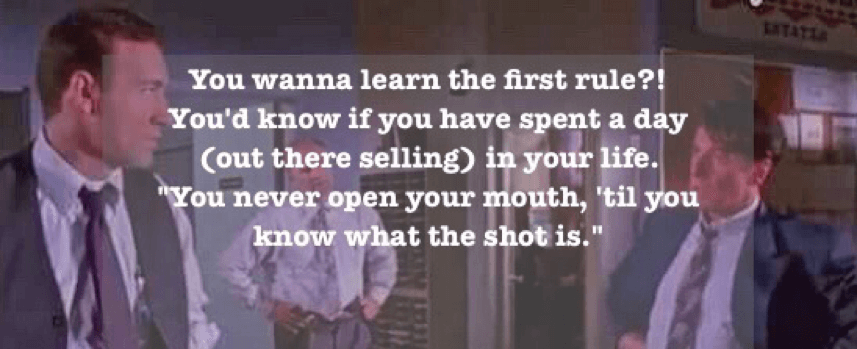
You can’t get to where you want to be if you don’t know where you’re going. If you don’t know exactly what you or your prospect wants from a deal then you are not informed. How will you know what you’re working towards? Closing deals mean establishing clear goals and expectations before entering any meeting or agreeing to any deal.
Similar to “Never put off for tomorrow that which you can do today,” This is simply a great reminder to push through and finish what you started before taking a break. Challenge yourself and be relentless with the objectives you set for yourself and your team. You will feel better each time you accomplish another one of your goals. Wrapping up any micro-goals you set for yourself can also inspire you to get more work done because of the momentum of success you’ve created. Save the coffee for after you take care of your goals.
WATCH NOW: Doug Dvorak | The secret to success? Talent, drive, and 4 am
There are lots of ways to get someone’s attention, but how do you keep it? We are constantly distracted with more things vying for our attention than ever before. Humor works well but can backfire if you can’t read the room. You can’t close if you don’t know how to get the attention of your prospects.
Are they interested? If not, then are you wasting your time? This is the part where your passion for the product or service should shine. How will you keep their interest? Don’t lie to close deals. Tell a story, get familiar, and speak with passion.
The moment you’ve been working so hard to get to. You’ve gotten them behind the wheel, now it’s time to drive. Will they put the pedal to the metal? This is where the hardest-hitting questions and objections rear their head. It takes a lot of confidence to guide a prospect into making a decision. Continue to reiterate how important their decision is and how the value of their choice can impact their future.
Closing time. This is your moment of glory. Write up and explain the agreement, ask if they have any questions or expectations, and close the deal.
Aside from being ridiculously quotable, Glengarry Glenn Ross is filled with countless sales lessons and motivating speeches. They may not all be applicable, but they are surely inspiring and at the very least entertaining. Glengarry Glenn Ross teaches sales teams to sell with confidence, study and learn from their prospects, and be relentless with their goals. Put these actionable sales lessons from Glengarry Glen Ross to good use for your own sales career and you will close more deals!

In this article, we discuss 10 benefits of sales coaching that show just how valuable sales coaching can be. Sales coaching has proven benefits to a company’s bottom line. However, many businesses are still hesitant to invest in proper sales coaching. Choosing a sales coach is a critical decision for any company. The benefits of a great sales coaching program are indispensable to the growth and culture of any organization.
Sales coaching can make a huge difference to your company’s overall performance in addition to improving the overall well-being of your sales representatives. It can even inspire them to grow and past their limits and achieve new areas of success in their lives. Below, we discuss 10 benefits of sales coaching your business can gain from effective sales coaching.
Related Reading: Sales Coaching Is A Must: What To Consider And How To Execute
Improvements in the skills of your sales force will without a doubt bring in more revenue for your organization. It would only make sense that since revenue is what keeps your company going then you would want everyone on your sales team to be squared away and firing on all cylinders. A proper training and coaching regiment will keep everyone sharp and on their toes, directly impacting sales and revenue.
A steady regiment of proper and effective sales coaching can give your sales team the confidence to take care of tasks and objectives without being asked or told to. The benefits of sales coaching can give the team clear and defined steps and make them more productive by motivating them to be more efficient and effective.
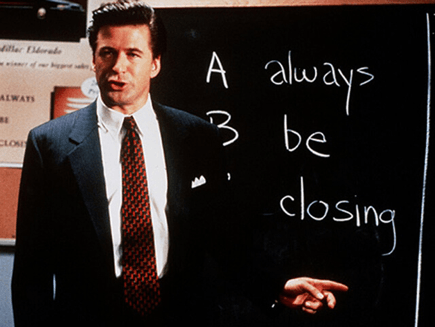 Sales coaching can help your team close deals more often or even reel in bigger fish. Your sales force becomes proficient at closing deals when sales reps hone their skills and gain the confidence to tackle more responsibilities. Coaching can help instill best practices that sales reps can fine-tune as they close more deals.
Sales coaching can help your team close deals more often or even reel in bigger fish. Your sales force becomes proficient at closing deals when sales reps hone their skills and gain the confidence to tackle more responsibilities. Coaching can help instill best practices that sales reps can fine-tune as they close more deals.
Good coaches can bring the team together for a win, but great coaches turn teams into champions. The same is true for your sales team. Think of the sales coach as a beacon of morale for your sales representatives. Great sales coaching won’t just improve individual performance but can also instill a sense of comradery, unity, and teamwork within your network of sales representatives. There are a lot of moving parts involved in closing a deal. Great sales coaching can ensure that everything is running like clockwork.
While repeat business is likely essential, it could get difficult to dig your team out of a rut if you find yourself in one if you can’t bring in new clients. Great sales coaching has the added benefit of inspiring and motivating sales representatives to feel more comfortable about taking risks which can lead to big deals and clients.
Great coaching can also improve your customer service which can, in turn, appease your clients and raise awareness about your business through word-of-mouth.
People appreciate being coached because of the comfort of having directions and clear instructions. Coaching provides sales representatives with guidelines that could potentially help them to be better at their jobs, which in turn improves satisfaction. You want your sales representatives to enjoy their jobs. Fulfillment comes through success. Effective sales coaching can improve employee satisfaction through a sense of accomplishment.
The benefits of sales coaching go far beyond just increased revenue. The challenges and obstacles one overcomes professionally are not unlike many of the personal challenges we face every day. Sales representatives that develop and learn from effective sales coaching learn how to think better on their feet by improving their decision-making skills. They are much more adept at recognizing opportunities and capitalizing on them which in turn can enrich their lives in more ways than just closing a deal.
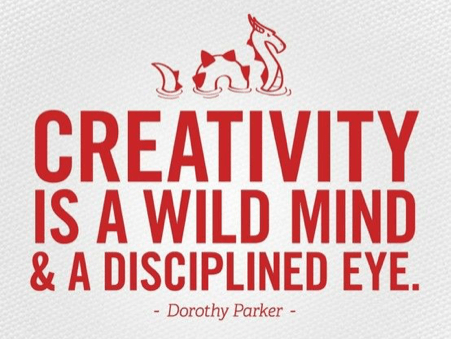 Great coaches are masters at listening and observing, that’s no secret. A great sales coach will support the new and alternatives ideas and solutions to problems presented by sales representatives. Additionally, they will also help to fine-tune these ideas with their rigorous questioning. The benefit of having a great sales coach is that they are great springboards for adventurous ideas and will also help sales representatives to achieve these ideas with realistic goals.
Great coaches are masters at listening and observing, that’s no secret. A great sales coach will support the new and alternatives ideas and solutions to problems presented by sales representatives. Additionally, they will also help to fine-tune these ideas with their rigorous questioning. The benefit of having a great sales coach is that they are great springboards for adventurous ideas and will also help sales representatives to achieve these ideas with realistic goals.
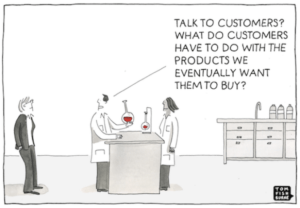 You can’t sell anything if you don’t know everything there is to know about your product or service. A good sales coach will educate sales representatives about the products and services they are selling. Sales coaches will ensure sales representatives can speak dangerously about the most important highlights of their products and services so as to help prospects understand the benefits and importance of what your organization has to offer.
You can’t sell anything if you don’t know everything there is to know about your product or service. A good sales coach will educate sales representatives about the products and services they are selling. Sales coaches will ensure sales representatives can speak dangerously about the most important highlights of their products and services so as to help prospects understand the benefits and importance of what your organization has to offer.
Coaching can help turn things around when a company is enduring adversity and uncertainty. Sales coaching benefits organizations of all sizes and colors. The benefits of Sales coaching include: an increase in your organization’s overall business performance, improve the quality of your product, maintain and improve the morale of your sales representatives, strengthen your employee’s resolve and commitment to the company, develop solid leaders by instilling confidence, and improve the capacity of your team to adapt to setbacks.
WATCH RELATED VIDEO: The Challenges You Face – Motivational Keynote Speaker Doug Dvorak
These 10 benefits of sales coaching are indispensable and imperative to the essence of any successful company. Sales coaching can completely overhaul business operations and transform sales representatives. Additionally, it can revitalize your team and offer new perspectives on effective selling strategies.